
3 minute read
2.3 Intake system
Ram air system
Unlike the 911 Carrera models (991), the 911 GT3 is equipped with a ram air system. Ram air systems are intake systems in which the intake openings are arranged in such a way that improved filling and thus an increase in engine power output can be achieved as a result of the ram air produced by the moving vehicle.
The one-piece, scoop-shaped ram air box on the rear lid allows efficient intake of air for the engine as well as improved supply of cooling air to the engine compartment.
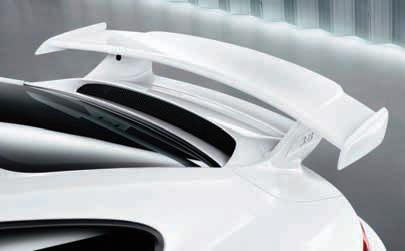
02_07_14
Air routing
The flow- and resistance-optimized air intake system up to the large throttle valve with a diameter of 86 mm was largely adopted from the current 911 generation (991).
The illustration shows the air routing after the ram air system (1) via the air cleaner housing (2) with sound openings (3) and two air-cleaner elements to the electronic throttle. DME Engine electronics 2
02_08_14
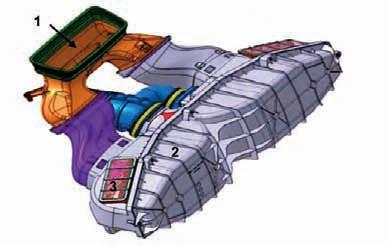
DME Engine electronics 2

The plastic resonance intake system is completely new. It is not only lighter than the aluminum intake system used in the previous model, but is also larger and has improved flow properties. The principle of using an intake system with a tuning flap to achieve an optimum torque curve was adopted from the previous models.
1 - Resonance tube (air distributor) 2 - Pressure sensor (intake manifold pressure) 3 - Intake manifold, left cylinder bank 4 - Intake manifold, right cylinder bank 5 - Electronic throttle flange
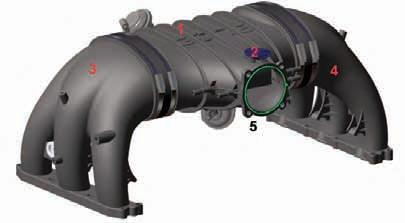
02_09_14
Pressure sensor for measuring engine load
A pressure sensor (2) in the intake system is used to measure the air flow (load detection) in order to determine the required fuel injection quantity in the same way as on the 911 Carrera (991). Compared with the hot-film mass air flow (MAF) sensor used in the previous model, load detection via a pressure sensor offers lower flow losses, higher accuracy with lower air flow and is less sensitive to soiling.
A switchable tuning flap installed after the electronic throttle in the resonance tube is used to improve the engine torque. The length of the intake pipes and the design of the resonance tube with its tuning flap are specially adapted for the 911 GT3.
The switching point of the tuning flap depends on the engine speed:
The tuning flap is closed at engine speeds of up to 7,400 rpm. The tuning flap is opened at engine speeds of over 7,400 rpm.

1 - Resonance tube (air distributor) 2 - Tuning flap 3 - Diaphragm cell (for closing the tuning flap) 4 - Electronic throttle flange 5 - Pressure sensor
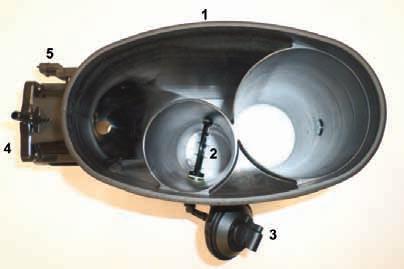
02_10_14 DME Engine electronics 2
DME Engine electronics 2

On the 991 GT3, the vacuum at idle speed and in deceleration mode is taken from the intake manifold. The vacuum is stored after the check valve in two vacuum reservoirs installed under the intake manifold. The switching valves for activating the individual functions/systems are also installed under the intake manifold.
1 - Check valve for vacuum supply 2 - Large vacuum reservoir for activation of: 3 - Tuning flap 4 - Exhaust flaps 5 - Disc valve for PDK heat exchanger 6 - Small vacuum reservoir for activation of: 7 - Secondary-air injection
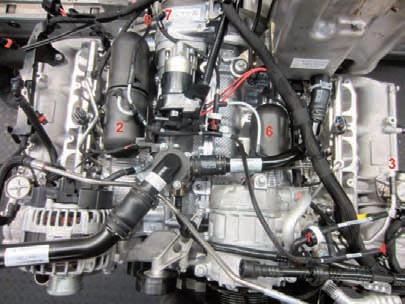
02_11_14








